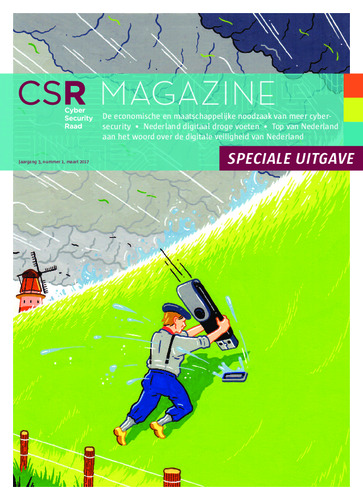- Home >
- Services >
- Access to Knowledge >
- Trend Monitor >
- Source of threat >
- Trend snippet: Training teacher through the use of hybrid teachers
Trends in Security Information
The HSD Trendmonitor is designed to provide access to relevant content on various subjects in the safety and security domain, to identify relevant developments and to connect knowledge and organisations. The safety and security domain encompasses a vast number of subjects. Four relevant taxonomies (type of threat or opportunity, victim, source of threat and domain of application) have been constructed in order to visualize all of these subjects. The taxonomies and related category descriptions have been carefully composed according to other taxonomies, European and international standards and our own expertise.
In order to identify safety and security related trends, relevant reports and HSD news articles are continuously scanned, analysed and classified by hand according to the four taxonomies. This results in a wide array of observations, which we call ‘Trend Snippets’. Multiple Trend Snippets combined can provide insights into safety and security trends. The size of the circles shows the relative weight of the topic, the filters can be used to further select the most relevant content for you. If you have an addition, question or remark, drop us a line at info@securitydelta.nl.
visible on larger screens only
Please expand your browser window.
Or enjoy this interactive application on your desktop or laptop.
Training teacher through the use of hybrid teachers
What is needed: Combining strength and establishing shared goals and hol one another accountable for attaining those goals.
Challenges Yet Oppers sees several major challenges ahead: ‘The very first step is to see that all teachers are digitally literate – quite an operation in itself. Over 180,000 teachers work in primary and secondary education in the Netherlands. They are the ones who will have to teach their pupils digital skills.’ Public-private partnerships can offer assistance in facing these challenges, says Vijselaar. ‘Institutions and businesses can contribute by helping schools train teachers or through the use of so-called hybrid teachers, who spend part of their time in the classroom – teaching – while also working part-time in professional practice. But those in education must take the first step. While most businesses are willing to help, they are often unsure of how to go about it. This is often because schools – and primary schools in particular – aren't quite sure of what they want from the business community.’ Oppers is aware of many individual projects involving schools and a single business. ‘Although this is a positive development, it's rather fragmented and short-term in nature. We can do better if we all combine our strengths, establish shared goals and hold one another accountable for attaining them.’ Oppers believes that great things can happen if the needs of schools can be linked to contributions from the business community. ‘What we're trying to achieve is a broad and coordinated effort from schools, businesses and social organisations that are excited by this possibility. In the autumn, we'll be making agreements with schools and partners in professional practice regarding what our priorities are and what everyone will be contributing.’




